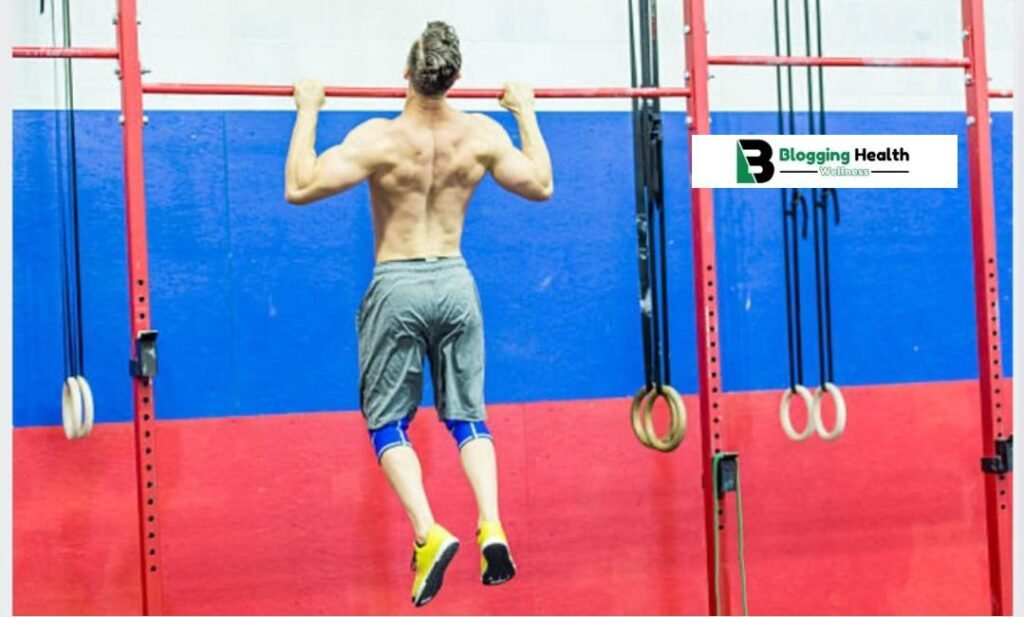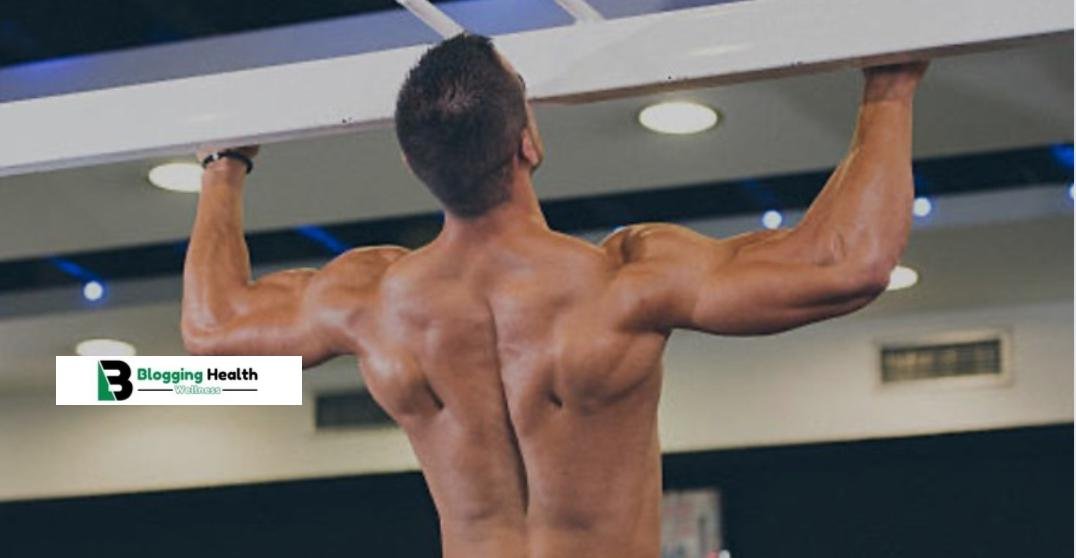Chin-ups and dips are among the best workouts for developing larger, more powerful arms. With their focus on the biceps, triceps, shoulders, and even the back, these two bodyweight exercises offer a full-body workout that can help you reach your desired arm size and strength.
We’ll go into great detail in this article on the benefits of chin-ups and dips for arm development, as well as how to do them correctly, advance with practice, and include them in a well-rounded training regimen. Whether you’re new to the gym or an experienced user, this book will give you all the tools you need to use chin-ups and dips to develop big arms.
Why Chin-Ups and Dips Are Effective for Arm Growth
Chin-ups and dips are examples of complex workouts that target several muscular groups simultaneously. Compound exercises, as opposed to isolation workouts that focus on a single muscle (like tricep pushdowns or bicep curls), enable you to lift larger weights and engage more muscle fibers, which promotes superior overall muscular growth. Let’s examine each exercise in more detail:

- Chin-Ups for Big Biceps
- Target Muscles: Chin-ups primarily target the biceps brachii, latissimus dorsi (lats), and forearms. The underhand grip emphasizes bicep engagement, making this one of the best bodyweight exercises for building arm size.
- Mechanism: When you perform a chin-up, your biceps work to pull your body toward the bar, mimicking the same pulling motion as a bicep curl but with added resistance from your bodyweight.
- Bonus: Chin-ups also work your back, shoulders, and core, giving you more bang for your buck by building overall upper-body strength.
- Dips for Big Triceps
- Target Muscles: Dips target the triceps brachii, chest, shoulders, and core muscles. The triceps—the muscles responsible for extending your arms—are heavily activated during dips, making them one of the most effective exercises for building size and strength in the upper arms.
- Mechanism: Dips involve lowering and lifting your body by bending your arms at the elbows, forcing the triceps to push you upward.
- Bonus: Like chin-ups, dips also engage other upper body muscles like the chest and shoulders, making it a compound movement that delivers significant muscle-building benefits.
The Science Behind Muscle Growth
Before we dive into the specifics of chin-ups and dips, it’s essential to understand how muscle growth works. Muscle hypertrophy (growth) occurs when your muscles undergo mechanical tension, muscle damage, and metabolic stress:
- Mechanical Tension: Lifting heavy weights (or your bodyweight) creates tension in your muscles. The greater the tension, the more likely your muscles will grow.
- Muscle Damage: When you exercise, tiny tears form in your muscle fibers. Your body repairs these tears, making the muscle fibers stronger and thicker over time.
- Metabolic Stress: The “pump” you feel after a workout is a sign of metabolic stress. This occurs when blood and nutrients pool in the muscles, leading to cell swelling, which can contribute to muscle growth.

Both chin-ups and dips create significant mechanical tension, muscle damage, and metabolic stress, making them perfect exercises for hypertrophy.
How to Perform Chin-Ups for Maximum Arm Growth
Chin-ups may look simple, but proper form is critical to ensure you’re maximizing arm activation and avoiding injury.
Step-by-Step Chin-Up Guide:
- Grip the Bar: Use an underhand grip (palms facing you), shoulder-width apart. This grip emphasizes the biceps more than an overhand grip.
- Hang from the Bar: Start from a dead hang, with your arms fully extended. Engage your core and retract your shoulder blades to stabilize your body.
- Pull Yourself Up: Focus on pulling your chest toward the bar. Keep your elbows close to your body to maximize bicep engagement. Avoid swinging or using momentum.
- Chin Over Bar: Pull yourself high enough so that your chin clears the bar. Pause for a second at the top.
- Lower Slowly: Lower your body in a controlled manner back to the dead hang position. Avoid dropping too quickly, as this can reduce muscle engagement and increase the risk of injury.
Common Mistakes to Avoid:
- Using Momentum: Swinging your body to get over the bar reduces the tension on your biceps and other muscles, making the exercise less effective.
- Partial Range of Motion: Ensure you fully extend your arms at the bottom and pull yourself high enough for your chin to clear the bar.
- Flaring Elbows: Keep your elbows close to your body to focus on your biceps and avoid unnecessary strain on your shoulders.

How to Perform Dips for Maximum Arm Growth
Dips are a powerful tricep exercise, but they can be tough on the shoulders if performed incorrectly. Here’s how to do them safely and effectively.
Step-by-Step Dip Guide:
- Grip the Bars: Hold onto parallel bars with your palms facing inward. Your hands should be slightly wider than shoulder-width apart.
- Start Position: Begin with your arms fully extended and your body elevated, with your legs straight or slightly bent.
- Lower Your Body: Slowly lower yourself by bending your elbows until your upper arms are parallel to the floor. Keep your elbows tucked close to your body to engage the triceps.
- Push Back Up: Push yourself back to the starting position by straightening your arms. Focus on using your triceps to lift your body.
- Controlled Movements: Lower your body slowly and press up explosively, but avoid locking your elbows at the top to maintain tension on the triceps.
Common Mistakes to Avoid:
- Leaning Too Far Forward: Leaning too far forward shifts the focus from your triceps to your chest. Keep your torso more upright to emphasize the triceps.
- Flaring Elbows: Keep your elbows close to your sides to protect your shoulders and fully engage your triceps.
- Dropping Too Low: Going too deep into the dip can strain your shoulders. Lower yourself until your upper arms are parallel to the floor, no further.
Progressing in Chin-Ups and Dips for Bigger Arms
As with any exercise, progressive overload is key to muscle growth. Here’s how to increase the difficulty of chin-ups and dips over time:
Progressing Chin-Ups:
- Increase Reps: Start by aiming for 3 sets of 8-12 reps. Once you can perform this comfortably, add more reps.
- Add Weight: Once you’re hitting higher reps (15+), use a weight belt or hold a dumbbell between your legs to increase resistance.
- Change Grip: Experiment with different grip variations, such as wide-grip chin-ups or neutral-grip chin-ups, to target your muscles from different angles.
Progressing Dips:
- Increase Reps: Like chin-ups, aim for 3 sets of 8-12 dips. Increase reps as you get stronger.
- Add Weight: Use a dip belt to add extra weight and challenge your triceps further.
- Try Ring Dips: If you’re advanced, try performing dips on gymnastic rings. This adds instability, forcing your triceps and shoulders to work even harder.
Incorporating Chin-Ups and Dips into Your Workout Routine
Chin-ups and dips can be part of a balanced upper-body workout that maximizes arm growth. Here’s how to integrate them into your routine:
Example Routine for Big Arms:
Day 1: Pull Focus (Chin-Ups for Biceps)
- Chin-Ups: 4 sets of 8-12 reps
- Barbell Rows: 3 sets of 8-10 reps
- Hammer Curls: 3 sets of 10-12 reps
- Face Pulls: 3 sets of 12-15 reps
Day 2: Push Focus (Dips for Triceps)
- Dips: 4 sets of 8-12 reps
- Overhead Tricep Extension: 3 sets of 10-12 reps
- Close-Grip Bench Press: 3 sets of 8-10 reps
- Lateral Raises: 3 sets of 12-15 reps
3: Full Upper Body
- Chin-Ups: 3 sets of 6-8 reps (weighted if possible)
- Dips: 3 sets of 6-8 reps (weighted if possible)
- Deadlifts: 4 sets of 5 reps
- Dumbbell Shoulder Press: 3 sets of 8-10 reps
Conclusion
Exercises that are best for developing larger Chin-Ups and Dips for Big Arms. You may use more muscle groups and lift heavier weights with these compound motions, which increases muscular activation and growth. You’ll be well on your way to building enormous arms if you can learn perfect form, advance gradually, and include them into a well-rounded exercise regimen. Chin-ups and dips should be mainstays in your arm-building repertoire, regardless of your level of fitness.


